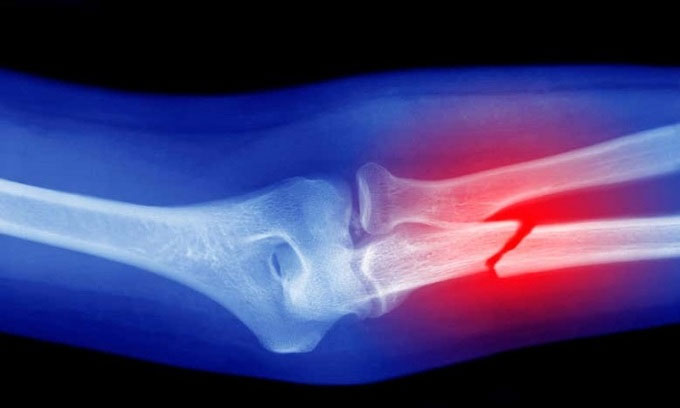Experimental study using vaccine technology to heal bones
Researchers are experimenting with using messenger RNA to heal broken bones and have had positive results when testing it in mice.
Although fractures usually heal on their own, bone does not regenerate in some cases, leading to some serious clinical problems including amputation. To enhance bone regeneration, the US Food and Drug Administration (FDA) approved the use of bone-forming protein 2 (BMP-2) in humans. However, this method is very expensive and only gives moderate effectiveness, and comes with many side effects.

Broken bones do not regenerate in some cases.
The team at the Mayo Clinic, along with colleagues in the Netherlands and Germany, found a possible and less risky solution than messenger RNA. This vaccine has been certified safe for use in humans by the FDA. They published their findings from the mouse study in the journal Science Advances on February 16.
According to the research results, messenger RNA can be used in low doses to regenerate bone without side effects. However, the quality of the new bone is much better than the bone made by BMP-2. The team also says messenger RNA is a good choice for bone regeneration because it doesn't need a repeater. The study showed that new tissue growth occurred after the continuous administration of messenger RNA during 8 weeks of follow-up.
Human bone develops in two ways: directly forming bone cells from mesenchymal stem cells or through ossification, in which cartilage gradually transforms into bone. BMP-2 therapy is based on the former while messenger RNA approaches the latter. The team concluded that messenger RNA could heal large fractures in a way that is superior to recombinant proteins.
The researchers also stress that the findings in mice are limited and that more research is needed in large animals before proceeding to clinical trials.
- Breakthrough in HIV vaccine research
- Canada will donate the Ebola vaccine to WHO
- What is a vaccine (vaccine)? Why is the vaccine not used to treat illness but to prevent it?
- Cancer can be cured with AstraZeneca's Covid-19 vaccine technology
- HIV-preventing mRNA vaccine gives good results in animals
- The Covid-19 vaccine is ready for testing, not yet available
- Promising breakthrough in research on cancer treatment vaccine
- The first experimental Covid-19 vaccine produced antibodies
- The H5N1 vaccine 'made in Vietnam' is about to be tested on humans
- Successful preparation of vaccines against HIV
- Successfully tested 'metastatic cancer vaccine'
- Tested to prove that the spray anthrax vaccine is highly effective
 Norway built the world's tallest wooden tower
Norway built the world's tallest wooden tower Kremlin
Kremlin Ashurbanipal: The oldest royal library in the world
Ashurbanipal: The oldest royal library in the world Decoding the thousand-year construction of Qin Shihuang shocked the world
Decoding the thousand-year construction of Qin Shihuang shocked the world